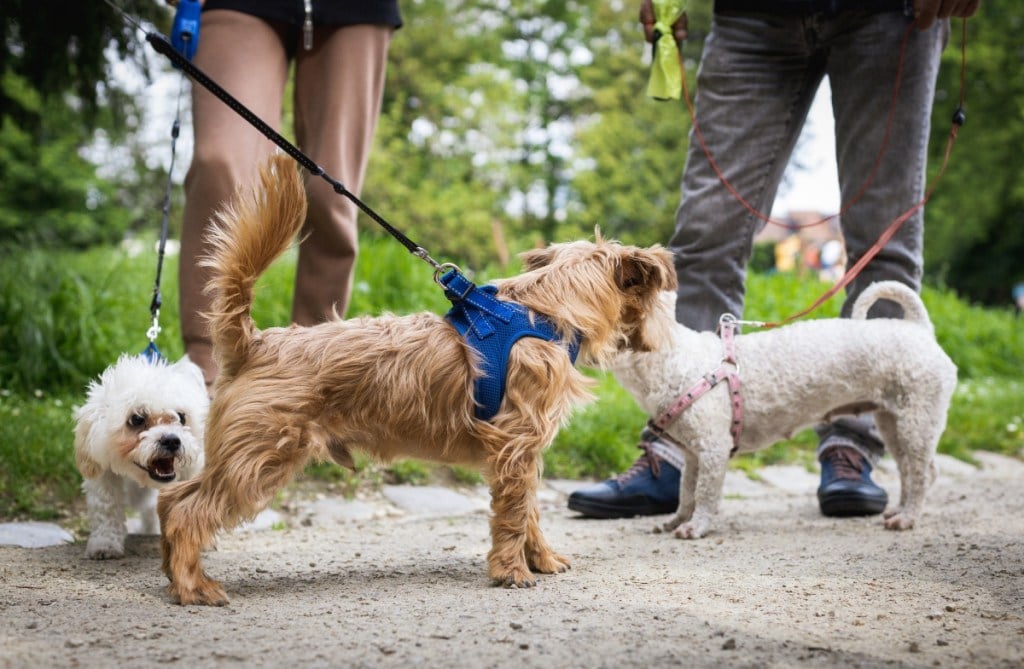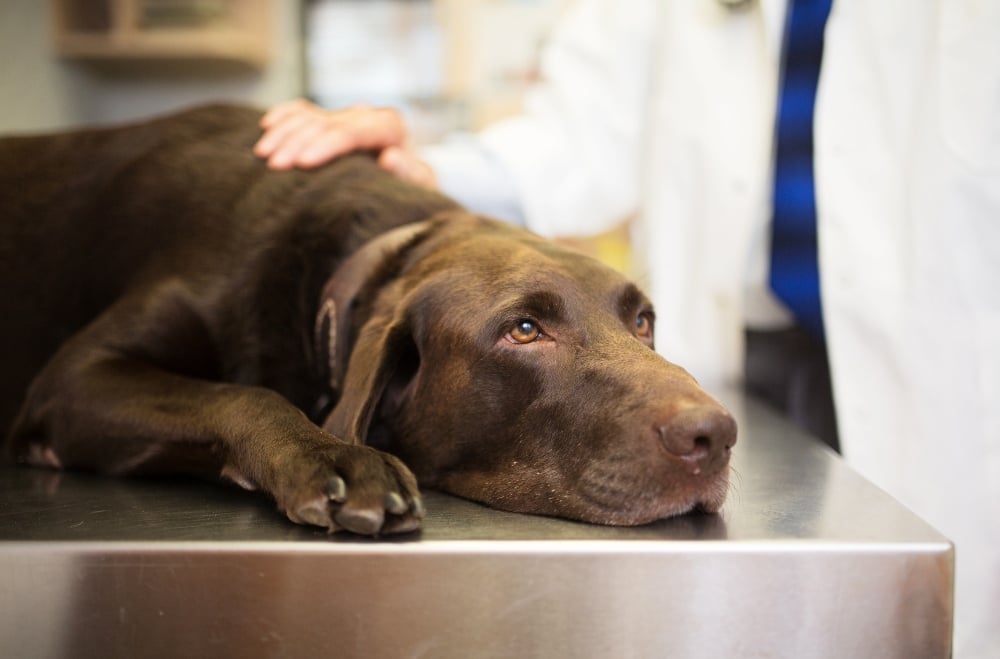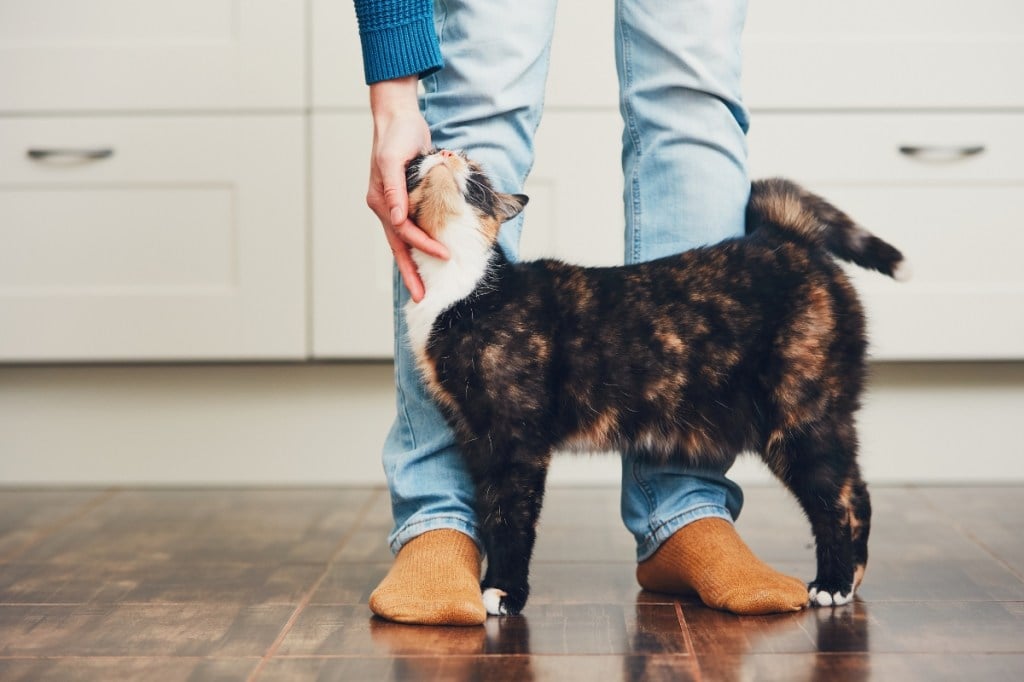Table of Contents
With its long flowing coat, elegant style and a history that goes back centuries, the Skye Terrier is a unique and loyal dog. Though not a common sight, this breed has a dignified charm and a devoted heart. If you’re interested in its special appearance and spirited nature, our guide explores everything you need to know about the remarkable Skye Terrier dog breed.
What Is a Skye Terrier?
Skye Terriers are stylish and graceful dogs with surprisingly strong and muscular builds hidden beneath their famous coats. Coming from the Isle of Skye in Scotland, this breed was first raised to be a fearless hunter of foxes, badgers and other pests on rough terrain. Its most famous feature is its long, low body, covered in a straight, heavy coat that parts down the middle.
The hair that falls over its head, known as a veil, protects its eyes from brush and brambles while hunting. Despite its elegant look, the Skye is a true working terrier at heart: agile, brave and always ready for an adventure.
Perhaps the most famous Skye Terrier is Greyfriars Bobby, a dog so devoted to his owner that he reportedly guarded his master’s grave in Edinburgh for 14 years. Its legendary loyalty is a core part of the breed’s temperament, making them incredibly dedicated companions to their families.
What Are the Skye Terrier’s Characteristics?
The Skye Terrier breed characteristics are a mix of grace and grit. They’re solidly built dogs, full of strength and vigor.

Size and Appearance
- Males: 10 inches tall
- Females: 9.5 inches tall
- Length: Roughly twice their height at the shoulder
- Coat: Straight, flat outer coat and soft, woolly undercoat
- Colors: Black, blue, cream, fawn, gray or silver platinum (all with possible black points)
Temperament and Personality
Skye Terriers are dignified, alert and deeply loyal. While calm and affectionate at home, they can be cautious with strangers and protective when needed. They’re often quieter than other terriers but remain confident and curious.
Breed Snapshot
| Breed Characteristic | Level (High, Medium, Low) |
| Affectionate with People | High |
| Good with Kids | Medium |
| Good with Pets | Medium |
| Need for Exercise | Medium |
| Energy Level | Medium |
| Intelligence Level | High |
| Able to be Trained | Medium |
| Amount of Barking | Medium to High |
| Amount of Shedding | Medium |
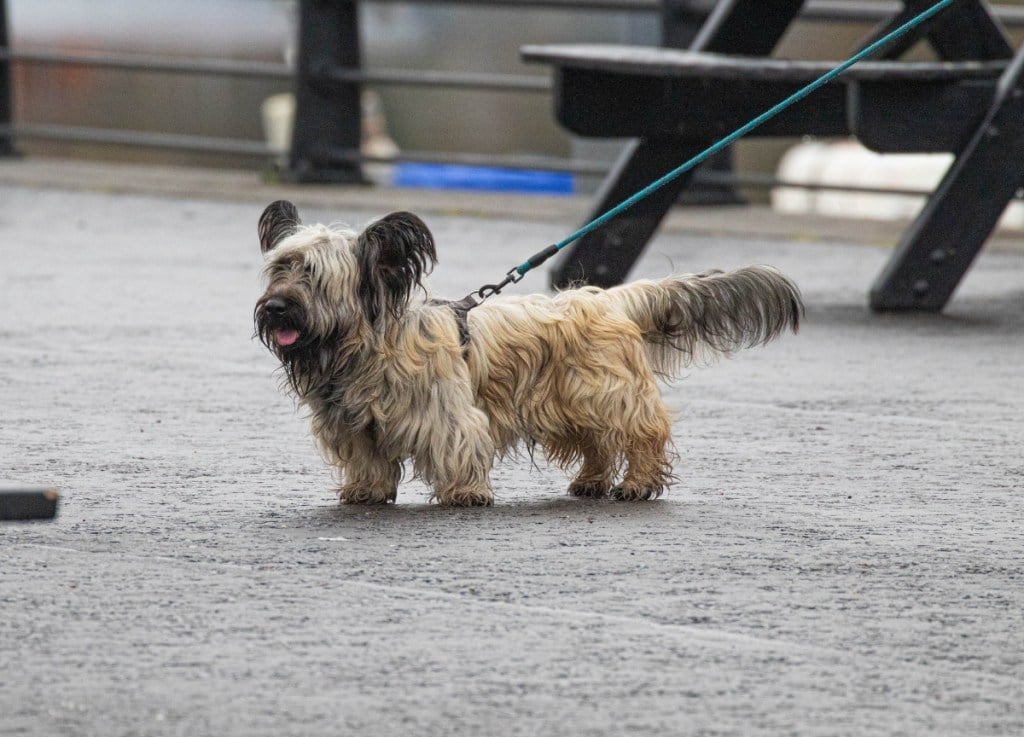
How to Care for a Skye Terrier
Though smaller in stature, the Skye Terrier requires meaningful daily care—from grooming that keeps their coat healthy to exercise that satisfies their active mind.
Living Environment
- Adaptable to both apartments and houses
- Do well in calm, structured homes with attentive owners
- Should avoid regular stair-climbing and furniture jumping due to long backs
Exercise and Enrichment
- Daily walks and play sessions are essential
- Moderate energy level but benefit from off-leash running in secure areas
- Thrive on games and training sessions that challenge their minds
- Keep physical activity low-impact to reduce back strain
Training and Socialization
- Intelligent but independent—respond best to calm, patient training
- Use positive reinforcement and short, engaging sessions
- Early socialization is critical for comfort around new people and environments
- Can be reserved with strangers, but warm up with consistent exposure
Grooming Needs
- Weekly brushing helps prevent tangles and matting
- Focus on brushing legs, ears and veil (hair over eyes)
- Do not trim or sculpt the coat—natural presentation is preferred
- Regular nail trims and ear checks are essential
Nutrition
- Feed a balanced, age-appropriate diet suited for small-to-medium breeds
- Monitor portion sizes to prevent weight gain, which can stress the spine
- Puppies should be fed a high-quality puppy formula until at least 12 months
- Adults benefit from two measured meals daily and clean water always available
Common Health Concerns
- Intervertebral disc disease (IVDD) due to long back
- Certain cancers (e.g., mammary or lymphatic)
- Autoimmune conditions
- Eye disorders like lens luxation or dry eye
Responsible breeders screen for known health risks, but pet insurance can help manage any unexpected costs that arise throughout your dog’s life.
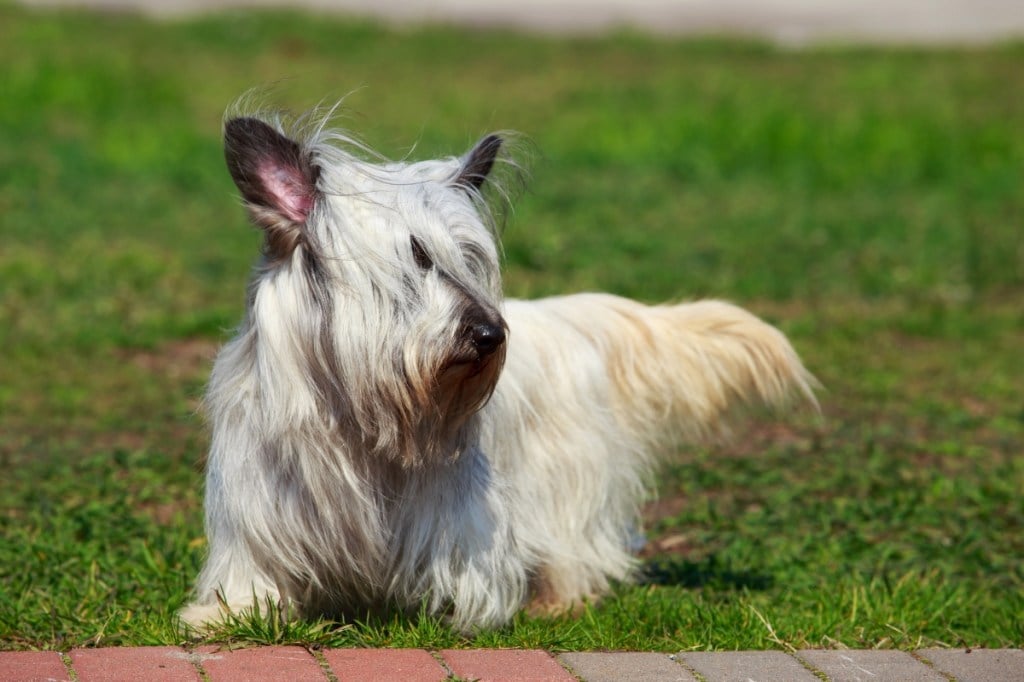
Should I Get Pet Insurance for My Skye Terrier?
The Skye Terrier is a generally hardy breed. However, like all purebred dogs, they can be prone to certain health conditions. Their unique build, with a long back and short legs, can make them more likely to have spinal issues, such as intervertebral disc disease. Other potential concerns include certain types of cancer, autoimmune conditions and eye problems.
Vet care for these conditions, from diagnostic imaging to surgery and long-term medication, can become expensive. This is where pet insurance offers great peace of mind.
Enrolling your Skye Terrier in a comprehensive pet insurance plan early in its life creates a safety net for the unexpected. A good pet insurance policy can help cover a large portion of the costs for accidents, illnesses, hereditary conditions and emergency care. It lets you make medical decisions for your dear companion based on your vet’s advice rather than being limited by money. Given the unique Skye Terrier breed characteristics, having a plan in place ensures you’re ready for any health challenges that may come up during your dog’s long and happy life.
FAQs About Skye Terriers
Are Skye Terriers Good Family Dogs?
Skye Terriers are very loyal and form strong bonds with their families. However, because they are reserved with strangers and have a dignified nature, they do best in homes with older, respectful children who know how to act around a dog. Early socialization is key for them to be comfortable in a family home.
Are Skye Terriers Hard to Train?
Challenging might be a better word than hard. They’re very smart. Their intelligence, mixed with a terrier’s independent streak, means they require patience and consistency during training. They respond best to positive and fun training methods.
Do Skye Terriers Bark Often?
As a true terrier bred to be a watchdog, the Skye can be prone to barking. They are excellent at alerting you if something is wrong. Consistent training can help manage extra barking and teach them when it is and isn’t okay to be noisy.
Does the Skye Terrier Have Health Issues?
While it’s generally a healthy breed, the Skye Terrier’s long body puts it at a higher risk for back and spinal problems. They can also be at risk for certain cancers and autoimmune diseases. Responsible breeders screen their dogs for known health issues to produce the healthiest puppies possible.




